Glass 3D printing is a rising technology in the additive manufacturing scene with its ability to take in broken glass and let out a molten line that can be laid down one layer at a time – a process remarkably similar to fused deposition modeling (FDM) printers that you know and love, but with an operating temperature about 10 times hotter. 3D printed glass is gaining the attention of scientists and artists alike, providing new avenues for custom glass-making that could have us seeing glass in a whole new light.
In this article, we will break down just how glass 3D printing works and what goes into its red-hot printers. We’ll also give you some insight into how glass 3D printing may be used in several different industries as well as another innovative take on 3D printing glass – vat-polymerization style. Finally, we’ll look into just how close we are to getting such technology at a Fab Lab near you. Let’s get started!
What Is It?
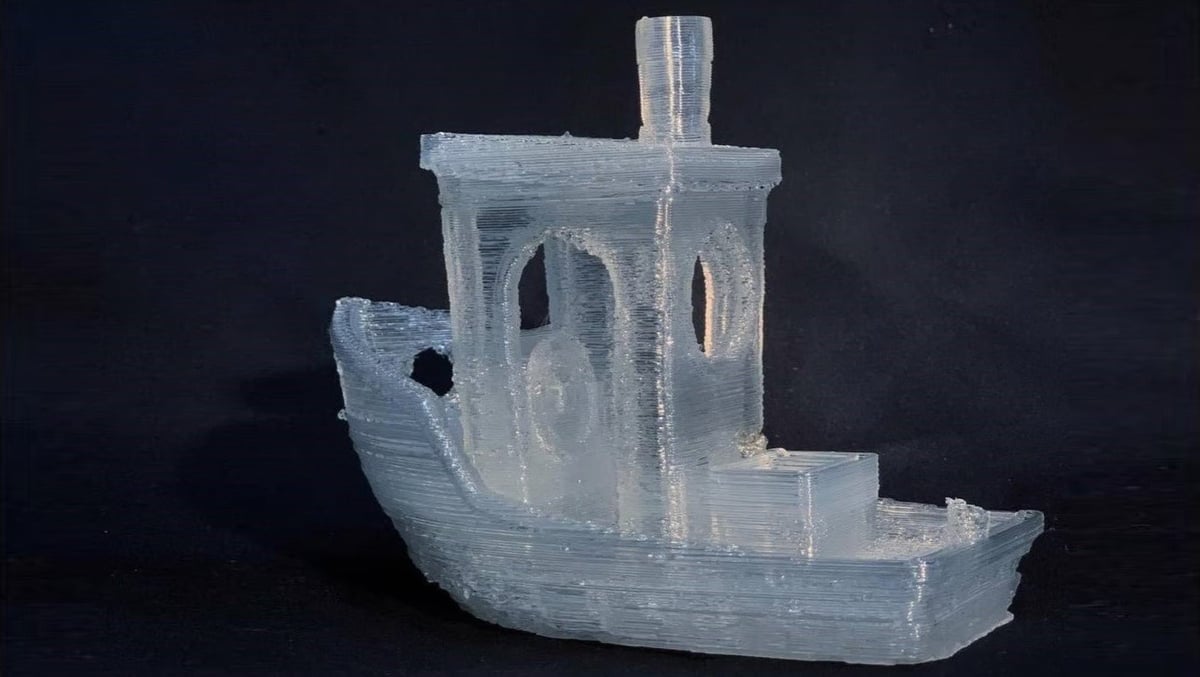
Glass 3D prints don’t have it easy like wood- or metal-filled filaments where small particles are dispersed into the filament, mimicking the texture of the pure material. True glass 3D printers need pure glass to print with. While some have found ways to add glass particles to a resin to make prints, the largest momentum is with FDM-style printers so we’ll focus on these for now and then check in on the state-of-the-art glass resin printing a bit later.
From crushing the glass, melting it down, and then making the filament rods needed to feed the printer, there are a lot of steps necessary to bring this idea to life. For starters, sourcing the glass equivalent to filament isn’t as simple as placing an order online. Currently, many in the field are producing their own stock material that gets fed into a printer.
Then comes the task of making a 3D printer lay down molten glass in perfect lines, layer after layer, until you get your finished result. Sounds similar to desktop 3D printing, right? The big difference here is that the glass 3D printer requires a bit more heat, with a printing temperature of a whopping 1,300 °C and a chamber upwards of 400 °C. That is one hot nozzle!
Let’s break down this process piece by piece to get a closer look at this hot innovation.
Materials

The type of glass that is used is versatile in terms of color and type, with some needing just slightly different temperatures to get the desired outcome. Glass like soda lime glass, art glass, crystal glass, or even recycled glass bottles are all able to be 3D printed. This is a familiar feeling to someone who uses 3D printers where different filaments are made of different materials and require different temperatures too.
Glass 3D printing machines, like Maple Glass Printing’s Maple 3, use glass rods that are inserted into the glass 3D printer through a hole in the top that leads to the heating element and then to the nozzle. They produce glass rods by crushing just about any waste glass and loading it into their device, the Vitri-Glass, that pulls molten glass into rods. This can produce glass rods between 3.5 and 6 mm in diameter to be used with the glass 3D printer.
As you may have noticed, glass 3D printing is perfect for recycling – glass can even be recycled over and over again without a decrease in properties. Imagine never having to buy filament again and rather reusing pickle jars you would otherwise throw away!
Next, let’s take a look at where this glass filament gets remelted and manipulated into complex geometries.
The Process

The glass rods we just discussed are ready to be loaded into the printer right away. Note that these glass rods aren’t wound around a spool, and need to be continuously loaded into the printer while printing. Other printers may have the glass rod extrusion built into the printer, such as the device produced by Neri Oxman’s research group at the Massachusetts Institute of Technology.
Glass 3D printers have to get the temperature of the glass rods or shards to around 1,300 °C for it to be soft enough to extrude, depending on the type of glass. No matter what shape of glass gets loaded into the printer, it must encounter this extreme heat before it can be applied to the build plate.
Just like most current 3D printers and CNC machines, glass 3D printing will often use G-code to relay printing instructions. This gives a nice familiarity to anyone in the 3D printing realm and it is appreciated. To really make you feel at home, Maple Glass Printing even recommends slicers like Cura or Simplify3D to create the files to print.
While inside the print chamber, the part in progress rests at a toasty 400 °C until printing is complete and a slow cool to room temperature can begin. Post-processing will depend on the desired end use, but prints are nearly ready to use right off the build plate!
Keep in mind that this technology is very early in its life. The exact setup of the current printers out there could vary a bit as this field continues to grow and become more accessible.
Next, let’s consider how this process differs from traditional glass making.
Printing vs. Traditional
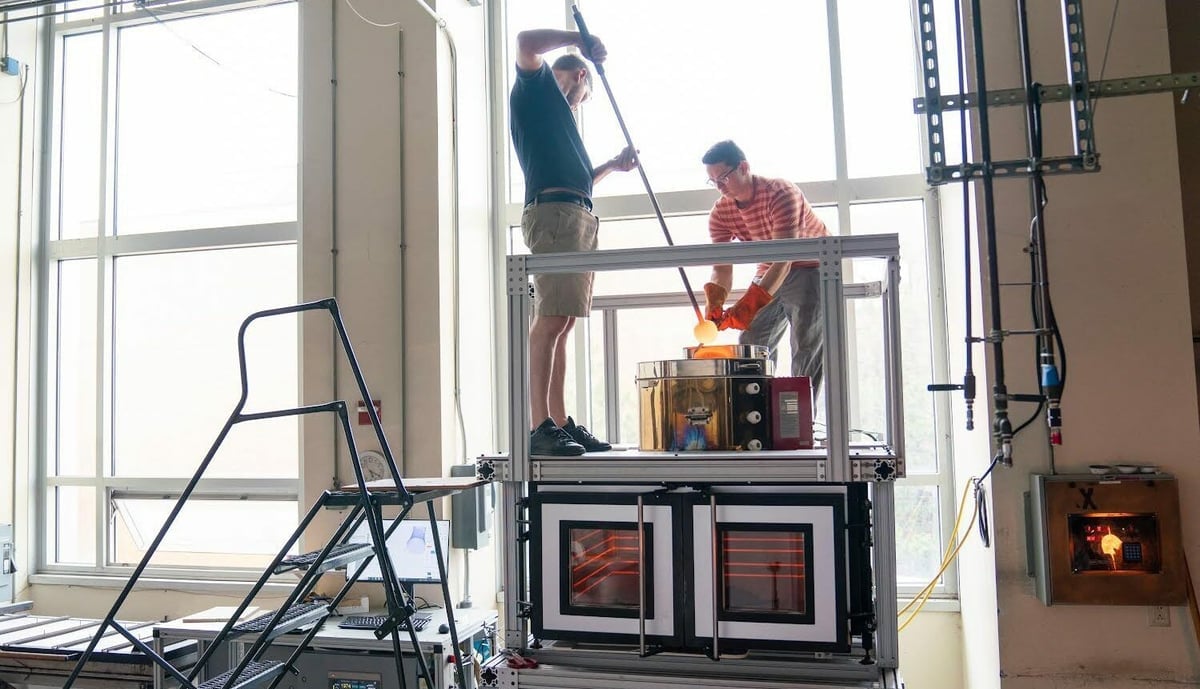
It’s safe to say that 3D printed glass won’t be challenging large-scale glass production methods anytime soon. Like 3D printed plastic, this glass manufacturing is best suited for niche, custom, or complex models that are difficult or impossible to achieve with traditional methods – in this case, glass blowing.
Glass blowing is without question a complex and physically demanding art that requires years of training and massive equipment and safety gear to carry out professionally. Unfortunately, this acts as a steep barrier to entry for those who have an occasional need for custom glass pieces or would like to expand into this unique medium without specializing in its production. This is especially true for complex geometries like microstructures that are used in research.
Having a glass 3D printer on hand could make the production of the material as accessible as it is for plastic. Researchers at MIT working on refining their glass 3D printer have highlighted the unprecedented control over the surface texture of printed glass, including on internal surfaces that is not possible with glass blowing.
Glass is a unique material, being mechanically strong and incredibly resistant to temperature and corrosion as well as inert and skin safe. While glass is abundant and inexpensive, its manufacturing is the opposite. Expanding access to the production of this material will undoubtedly see applications that we may not even imagine, such as creating noninvasive but durable cases for bird tracking tags.
Applications
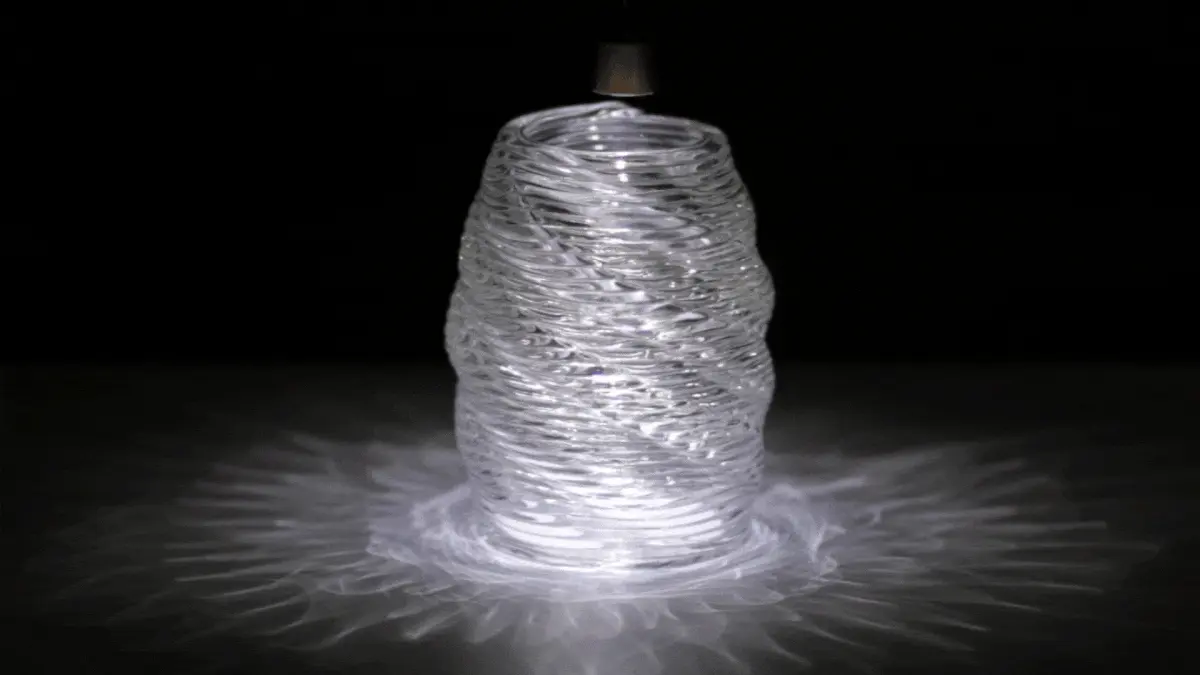
Many of the companies and scientists that are doing glass 3D printing see art, architecture, optics, research, and jewelry as the main areas that will see the benefits of glass 3D printing for now. Just check out some of the amazing structures created over at Oxman that combine art, materials science, and structural engineering.
As an artistic medium, 3D printing glass allows for precise and repeated deposition lines with unique curvatures as well as internal geometries. Passing light through the glass structures creates a beautiful, mesmerizing aurora effect as the light gets dispersed and reflected along the layer lines and surface texture.
The other application driving glass printing forward is scientific research. Glassware is an irreplaceable experimental asset across several STEM fields due to its strength, chemical inertness, and transparency and the need for customization is frequent. One example is microfluidic devices, which researchers use to perform controlled experiments with extremely small amounts of material. Containing a complex network of internal channels, the production of these devices is currently very time-consuming – something that glass 3D printing could potentially change; however, this is not yet seen full implementation.
Naturally, an FDM-style approach may not be ideal for such small and complex features that would be needed for applications such as microfluidics. The resolution that resin printing can achieve would be preferred instead, and a start-up named Glassomer has aimed to do just that.
Glass from Resin
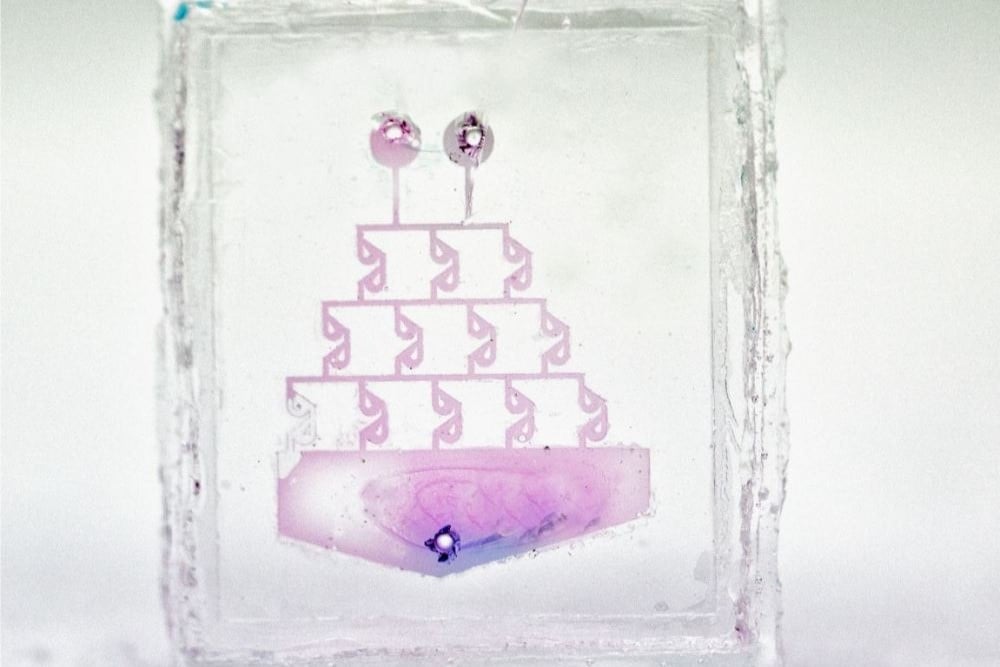
Glassomer, a German start-up formed out of NeptunLab, a research lab at Karlsruhe Institute of Technology, uses a liquid glass resin containing amorphous silica to achieve glass 3D printing. The glass-containing resin can be printed on any desktop resin 3D printer, according to the start-up.
The post-processing involves the sintering of the print in an oven that reaches 1,300 °C to melt away the polymer binder and fuse the glass particles into a solid, transparent piece. Despite the melting away of material, the company claims that the parts retain their shape after an isotropic (equal in all directions) shrinkage.
This type of glass printing allows for surface roughness that can get down to a few nanometers and allows for complex physical structures. The major limitation to printing this resin is its wall thickness: it can’t be greater than 1 cm, given that anything larger than that will cause cracks on the inside of the glass.
As exciting as this new technology sounds, the only way to get your hands on this product for now is by contacting Glassomer directly and speaking with one of their agents to find you the best solution for your needs.
So after all this, you may be wondering if glass 3D printing is still limited to research facilities, but fret not! There is one glass 3D printing device in the market for those wanting to get in on this growing technology themselves.
Commercial Devices
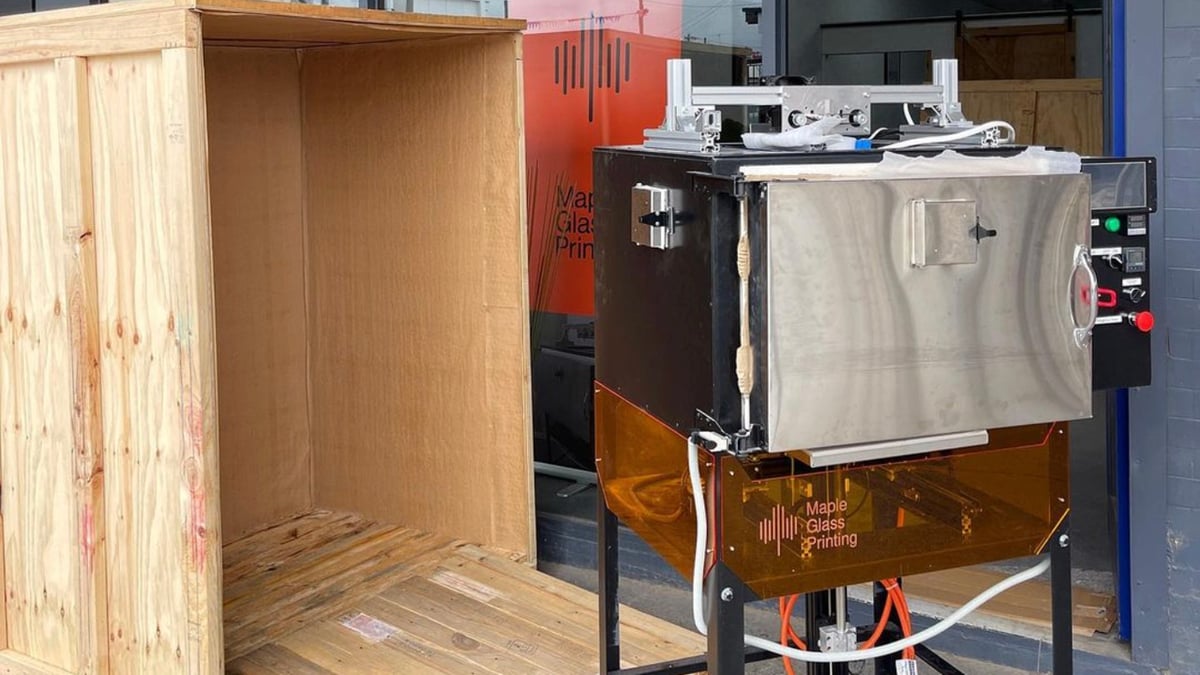
Being a new technology, there aren’t many people in the game of glass 3D printing. We’ve already mentioned a couple of players in the glass 3D printing world, yet much of it still seems experimental. While that’s true, Maple Glass Printing has recently emerged as the only company offering a glass 3D printing device commercially.
Based in Australia, their goals are to fuel sustainable creation and make an impact in the landfills by raising the percentage of glass that’s recycled, by using it in their printers. They’re now on the third rendition of their printer and have rightfully named it the Maple 3.
The Maple 3 is now available for purchase on their site for a price, at the time of publishing, of $45,000. If you want to be able to make your own glass filament from your recycled glass, you can purchase the Vitri-Glass, which is their high-throughput automated glass filament extruder, for $15,000.
What about other companies that do glass 3D printing? Well, there aren’t many – for now. With the massive research drive to bring more technology like this to market, it’s only a matter of time before we see more glass printing systems cropping up. A name to watch out for is Nobula3D, who are looking to bring to market a “glass foundry on your desk”.
However, if you’re just looking to get your hands on 3D printed glass, the makers behind the glass printer at MIT sell decorative 3D printed glass parts from their Evenline studio.
Outlook
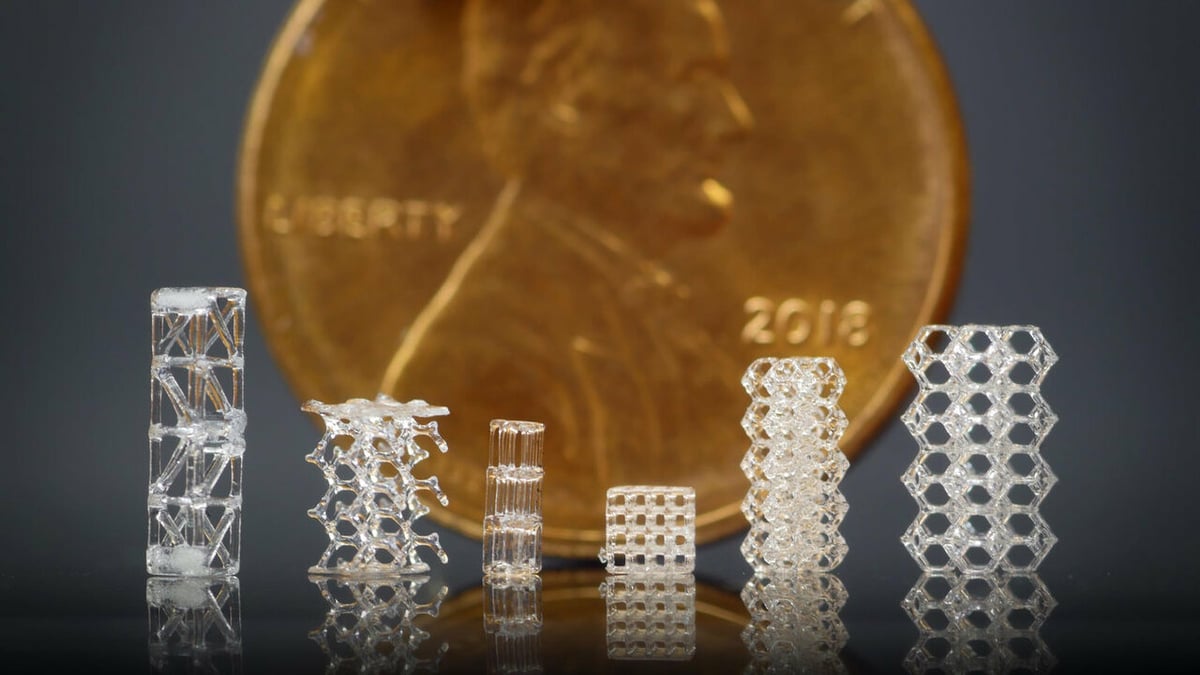
The future of glass 3D printing has a lot to look forward to. With MIT doing research into advancing glass 3D printing technology, they have created a low-temperature solution that would allow the printing temperatures to drop from around 1,000-1,400 °C to a mere 250 °C. Low-temperature glass manufacturing would not only make the printers safer and reduce their energy consumption, but it would also allow for the inclusion of additives that could alter glass properties in interesting ways.
An application of glass 3D printing that’s in its early stages is creating a Venus flower basket structure found in nature out of glass. This geometric pattern of glass has structural strengths equivalent to steel support.
When all is said and done, we can see that glass 3D printing is in its infancy and seems to have a lot of room to still grow, especially in popularity. With the help of companies starting to sell commercial devices, we hope to see the future of glass 3D printing expand and grow as it gets more efficient and easier to work with.
License: The text of "Glass 3D Printing: All You Need to Know" by All3DP is licensed under a Creative Commons Attribution 4.0 International License.
